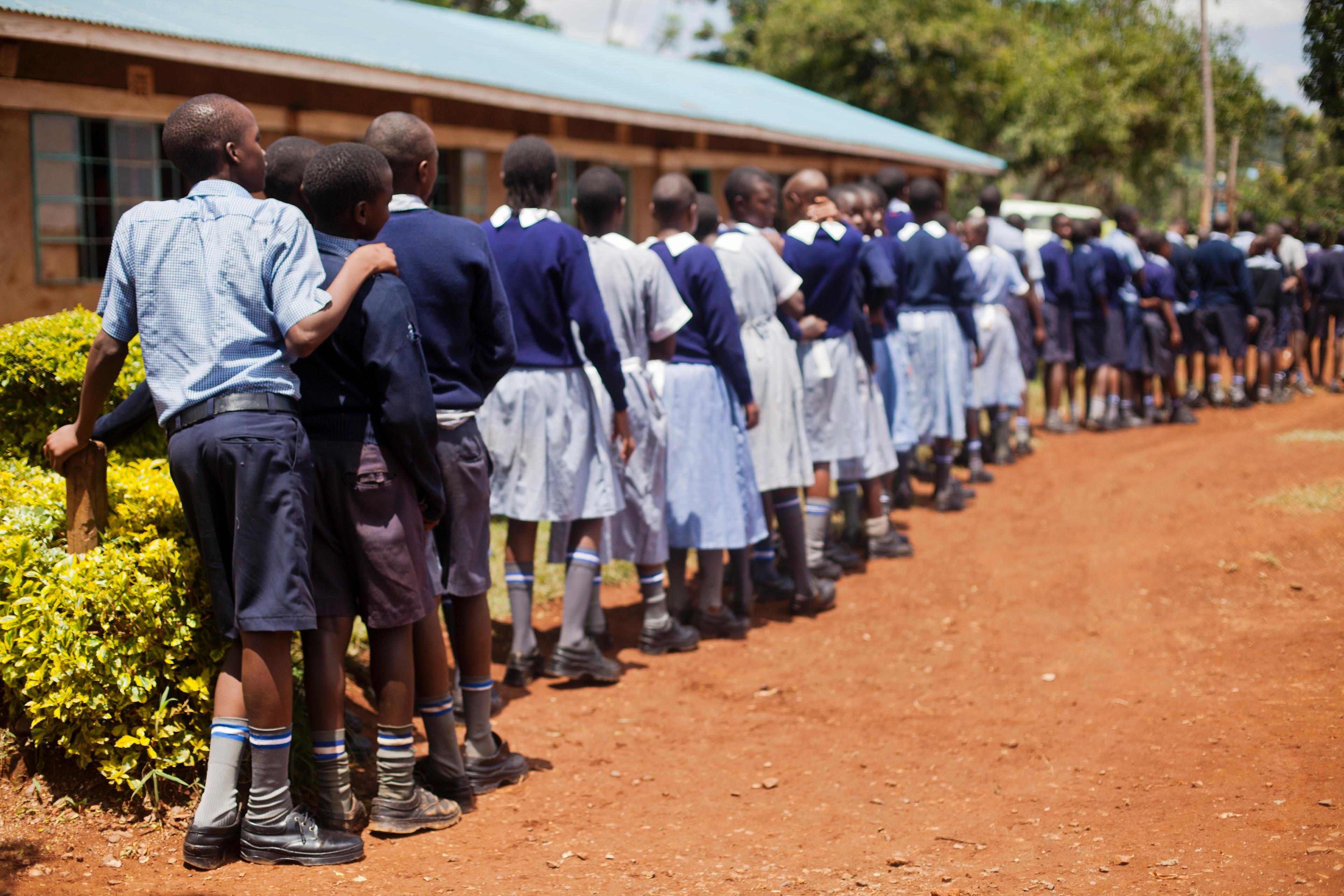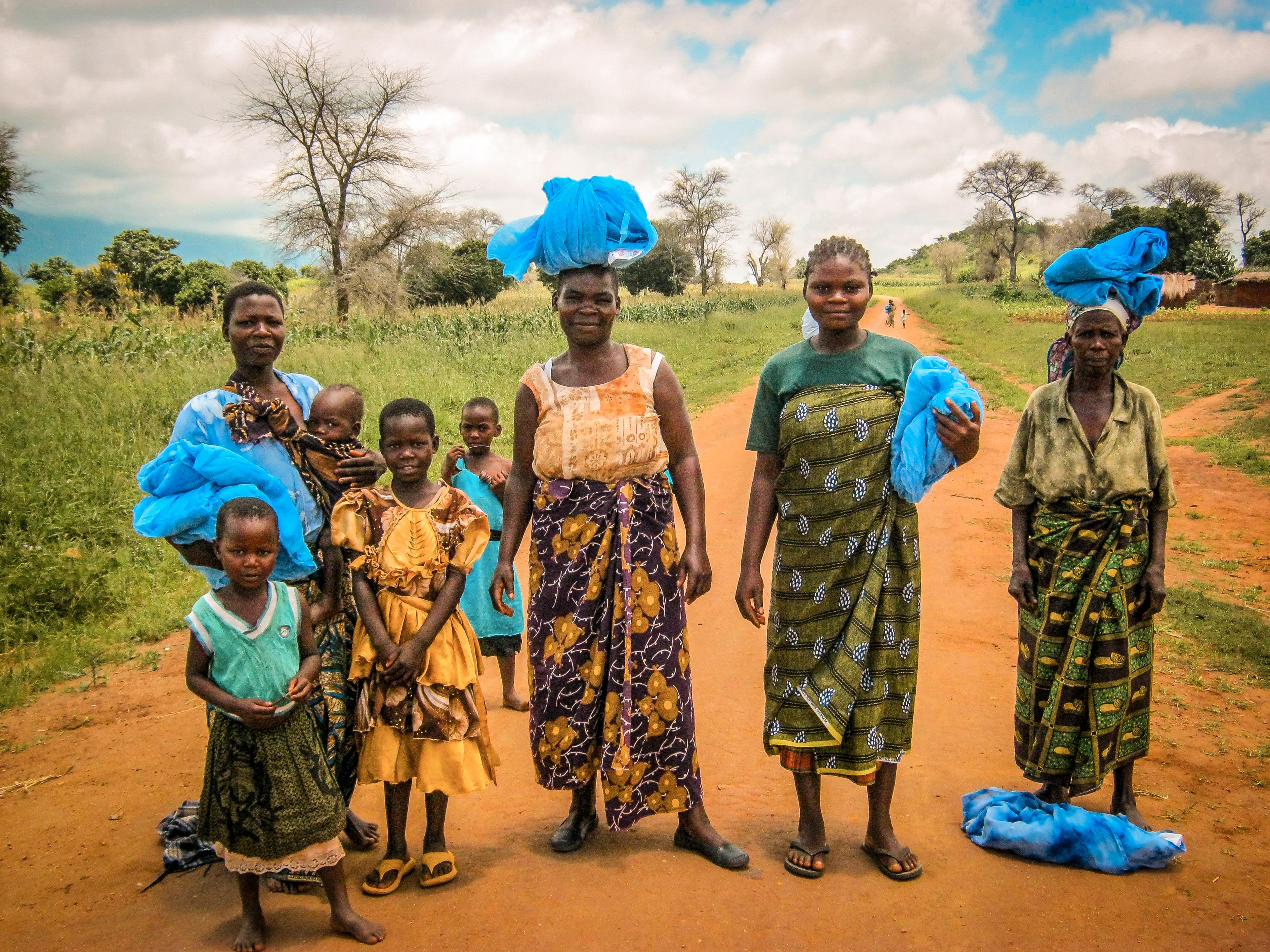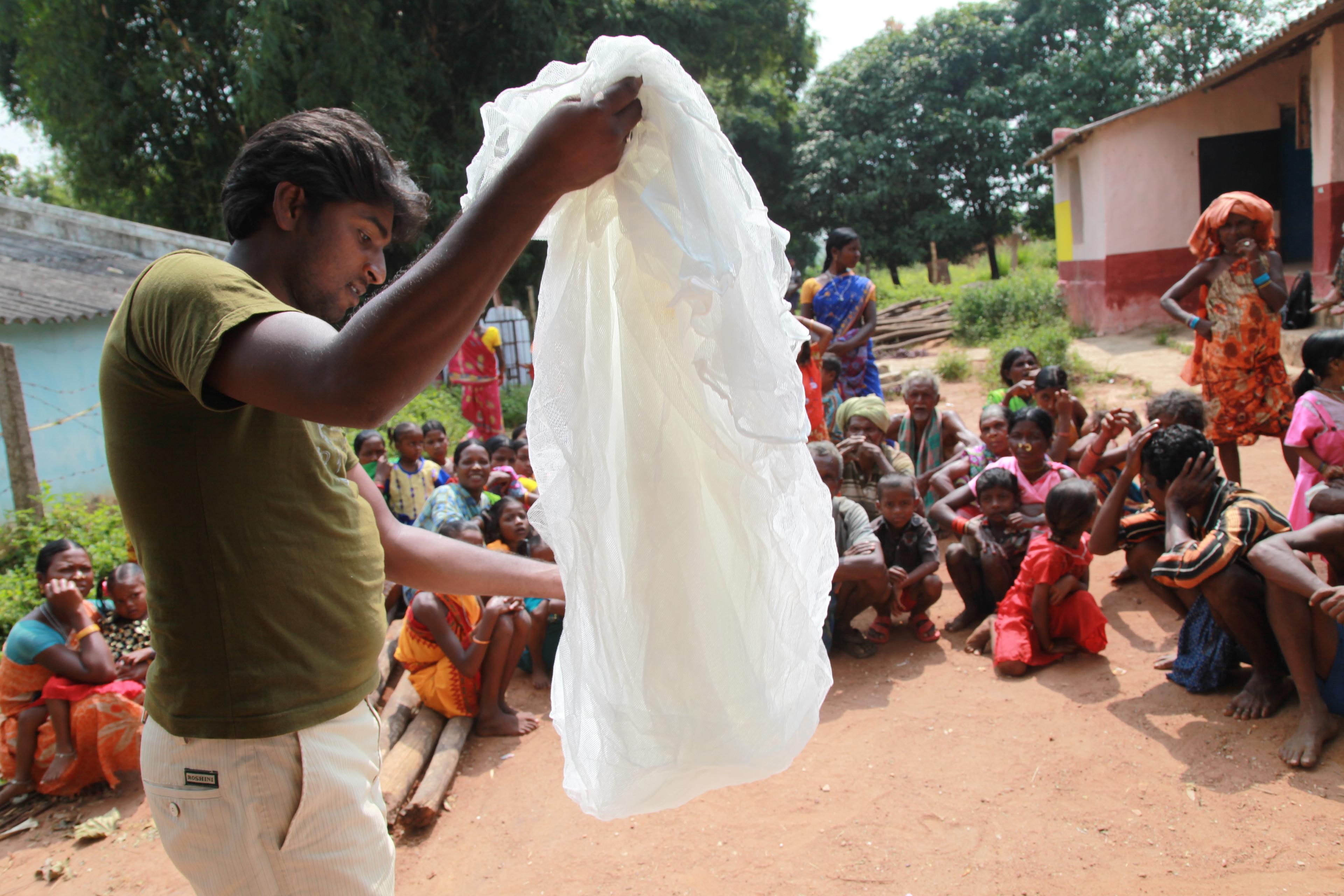Giving What We Can’s Recommendations for Giving Season 2015
With the 2015 Giving Season upon us, we’ve reviewed our top charity recommendations so that you can make an informed decision about where to give.

This year we have extensively reviewed our top charities, the Against Malaria Foundation and the Schistosomiasis Control Initiative. We continue to believe that both the Against Malaria Foundation and the Schistosomiasis Control Initiative are some of the most effective giving opportunities and continue to recommend giving to them this season.
We have also reviewed our promising charities, which are charities we are not as certain about as our top charities, but that might have an even higher impact. We continue to recommend giving to the Deworm the World Initiative and Project Healthy Children.
Charity updates
Against Malaria Foundation (AMF)
The Against Malaria Foundation, which funds and provides technical assistance with distributions of long-lasting insecticide treated bednets, remains a top charity.We have written an extensive update on the effectiveness of AMF’s bednet distributions this year.
The charity evaluator Givewell has also updated their review of AMF and ranks AMF as their #1 charity. In brief, AMF has funded large net distributions in 2015 and is planning to fund even larger distributions in 2016, which have and will avert much suffering and death due to malaria.

Room for more funding update: AMF will likely receive a grant of $22.8 million dollars from Good Ventures. However, there is still a major funding gap globally for insecticide treated nets - which means that in the long-term there is a funding gap for AMF.
In the the short term, there is also a funding gap for AMF. Givewell estimates that even after taking into account the Good Ventures grant of $22.5 Million and what Givewell donors will give until February 2015 (~$15 million), and what other donors (which includes Giving What We Can donors) are expected to give until February 2015 ($1.6 million), AMF still needs about $13.4 million dollars in order for there to be at least a 50% chance for AMF to not to be funding constrained in the next year1.
In sum, because there is a big funding gap, and AMF has a good track record of distributing bednets as well as being accountable and transparent, we highly recommend donating to AMF this winter.
Schistosomiasis Control Initiative (SCI)
The Schistosomiasis Control Initiative provides technical assistance to governments with deworming programmes. We have written an update on SCI this year and Givewell has also recently updated their review of SCI and ranks them as their #2 charity.
SCI has helped implement large deworming programmes in 2015 and plans to scale up and assist with even bigger operations in 20162. For instance, SCI reports that up to the end March 2015, SCI contributed to delivering about 47 million deworming treatments overall, and from 1st April 2015 to 31st March 2016 alone it plans to help deliver 36 million treatments3.

Room for more funding update: There is still large unmet need for deworming treatment globally and thus a long-term funding gap. In the short-term, Givewell estimates that SCI needs about $4.9 million dollars in order for there to be at least a 50% chance for SCI to not to be funding constrained in the next year.
In sum, SCI remains a top charity. We believe it is one of the most effective charities one can donate to.
Deworm the World Initiative as part of Evidence Action (DtWI)
The Deworm the World Initiative (DtWI), like SCI, provides technical assistance to governments with deworming programmes. We have written an extensive update on DtWI this year and Givewell has also recently updated their review of DtWI and ranks DtWI as their #3 charity.
DtWI has helped implement large deworming programmes in 2015 and plans to scale up to other countries and assist with even bigger operations in 2016. For instance, DtWI helped coordinate the first national deworming day in India this year, and 89.9 million children in 12 Indian states were targeted. Next year they will try to include all 36 Indian states and try to intensify their work in Kenya and India and potentially expand their work into Ethiopia, Vietnam, Pakistan4.

Room for more funding update: DtWI will likely receive a grant of $10.8 million dollars from Good Ventures5. There is still large unmet need for deworming treatment globally and thus a long-term funding gap. However, because of the Good Ventures grant, in the short-term, Givewell estimates that DtWI does not have a funding gap, defined as there being at least a 50% chance for DtWI to not to be funding constrained in the next year.
It is important to note that this calculation takes into account the $2.5 million that Giving What We Can and other non-Givewell influenced donors have donated to DtWI6. Currently, we estimate that Giving What We Can influenced donors will donate $300,000 to Deworm the World Initiative. Moreover, Givewell also estimates that there is a small 5% probability that DtWI might be able to spend an additional $8.2 million, if existing programmes move forward quickly.
Thus, we will keep up our current recommendation of DtWI for now, in order to not disrupt their existing activities or slow down their scale up. However, we might change our recommendation next year, in case we believe that donors following Giving What We Can’s recommendation of DtWI will donate too much for DtWI to productively absorb in the short-term.
In sum, DtWI remains a promising charity, and we believe it is one of the most effective charities one can donate to.
Project Healthy Children (PHC)
Project Healthy Children provides technical assistance governments with micronutrient fortification programmes (the fortification of staple foods such as oil and salt with vitamins and minerals). We have written an extensive update this year and the charity evaluator Givewell is also in the process of reviewing PHC.
PHC has worked on micronutrient fortification legislation in 2015 and they report that they have made good progress: for instance, a cooking oil supplier holding 60% of the market share in Burundi now fortifies their oil with Vitamin A. There is still large unmet need for micronutrient fortification globally and thus a long-term funding gap.
It is important to note that we cannot be as certain about PHC’s effectiveness, because the impact of technical assistance is hard to measure. We also do not know as much about PHC as about the other charities we recommend. However, our review suggests that micronutrient fortification at (industrial) scales might potentially avert a lot of ill health, that micronutrient deficiency is a very tractable problem, and that the countries that PHC is active in (small countries with a population of less than 20 million) are potentially neglected by larger development agencies and other charities. Next year we will look in more detail into GAIN and IGN, two other charities in the micronutrient space.
In sum, PHC remains a promising charity and we believe it is one of the most effective charities one can donate to.
Concerns about fungibility of donations and Room for more funding
Because the Good Ventures foundation has made grants to AMF, SCI, and DtWI, some people have been concerned about fungibility, i.e. that small donors do not really have an impact with their donations, because a bigger donor might easily fill the funding gap of these charities anyway and will just strategically leave them open.
Givewell has written about their views on this here and here. In brief, they will only fill 50% of the funding gap that is related to the scale up and leave the other half for other donors to fill. Givewell also reports that they will not recommend more grants to Good Ventures in the next year.
We do not believe that fungibility is a grave concern against giving to our charities currently. First, Good Ventures is trying to give money away in the most effective way, which is what we are trying to do too. That means that if we’re fungible with each other that effectively leaves the other with with more money to give to other effective charities - which is what we all want.
Second, we believe that there will be many more effective giving opportunities in the future and we won’t ‘run out’ of very effective causes to give to. A lot of money is needed for health globally — just look at the differences in health expenditure between countries. In the United Kingdom, $3598 is spent per person per year on health7. In the Democratic Republic of Congo, one of the countries where AMF is active in, the health expenditure is only about $16 per person per year. This means that there will be a very big gap and inequality in terms of health and wealth for a long time to come, with many opportunities for effective giving. In other words, global poverty and global health are very big problems, with immense funding gaps, that foundations and governments are struggling to fill.
Finally, in case you’re still concerned about fungibility with Good Ventures, there are two alternatives: first, you could give to Project Healthy Children, which is not currently on the Givewell recommended charities list (however, Givewell seems to be in the process of reviewing them). Alternatively, especially if you’re somewhat risk averse with your giving and are looking for your donation to have an impact with very high certainty, you could consider giving to GiveDirectly, which, in the long-term, will have the biggest funding gap.
Concerns about deworming, malaria, and aid effectiveness
This year there have been some concerns that deworming is not really effective (‘worms wars’), that malaria nets are used for fishing, and that aid might not be effective in general.
Deworming
Our response to the deworming controversy can be found here. In brief, not all deworming is the same. Even the authors of the Cochrane Review that ‘called into question the benefits of mass deworming’ agree that there should be mass deworming for schistosomiasis, which both of our charities are involved in (DtWI is now also trying to expand into schistosomiasis endemic countries).
More importantly, even the authors of the Cochrane review agree that children known to have worms should be dewormed. Since it’s cheaper to mass deworm and there are very few and only minor side effects, we believe that mass deworming is still a cost-effective intervention. Finally, we think that some of the evidence of the developmental effects (cognitive effects, schooling outcomes, and effects on labour productivity later in life) have not been taken into account by the Cochrane review, but are highly relevant.
Bednet misuse
The misuse of bednets has caused some controversy. A recent article in the New York Times claimed that "countless [people in Africa] are not using their mosquito nets as global health experts have intended," preferring to use them as fishing nets. However a comprehensive analysis of multiple studies has done the counting and shown that less than 1% of nets were repurposed for fishing. Most of those which were repurposed had already been too worn out to stop mosquitos.

Furthermore, AMF has excellent monitoring and evaluation of their programmes. Monitoring data from Malawi (among other countries) shows high levels of continued use. After two years, 81% of nets distributed were still being hung up, with 77% still in serviceable condition. We have written about this in more detail here.
Aid effectiveness in general
Finally, Angus Deaton, who has often been called an aid skeptic won the nobel prize in Economics this year. Does that mean that aid doesn’t work? Does that mean that the interventions that our charities perform don’t work or don’t make sense? We don’t believe this is the case. In the same way that music critics like some music, aid critics such as Angus Deaton actually view some aid very favourably.
Givewell has an excellent post on “The Lack of Controversy over Well-Targeted Aid“. The bottom line is that, even though there is disagreement between economists when it comes to aid, with some economists viewing aid very critically and others viewing aid generally favourably, even the most prominent aid critics are in favour of the well-targeted health interventions that our recommended charities are engaged in.
Have a look at our Myths About Aid page for more info.